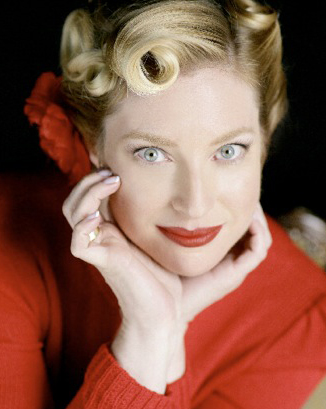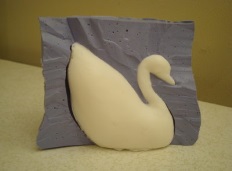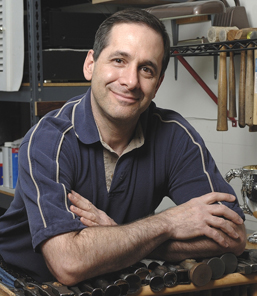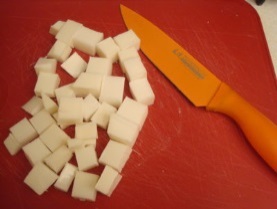
The Modern Butlers’ Journal
June 2017
In its 13th year of publication
International Institute of Modern Butlers
Teaching Right Mindset, People Skills, & Superior-service Expertise
Message from the Chairman

Being a butler is a lifelong learning experience, and it is not always obvious from which quarter the next lesson will come. In this case, I was struck by what geese have to tell us about teamwork and loyalty. The below taken from an unknown author, and edited.
“When next you see geese flying south for the winter, you mightconsider the science and teamwork behind the “V” formation they maintain. As each bird flaps its wings, it creates an up-lift for the bird immediately following, increasing their flying range by at least 71% compared with a bird flying alone. People who share a common direction and sense of community can arrive at their destination or goal more rapidly and easily because they are traveling with the thrust of each other.
“When a goose falls out of formation, it immediately feels the increased resistance and quickly returns to the formation. If men had as much sense as a goose, they would stay in formation with the rest of the team heading in the same direction.
“When the head goose tires, it rotates back in the wing and another goose flies point. Similarly, it is sensible to take turns covering the demanding jobs—in the same way that politicians at the beginning of the American Republic used to volunteer for their unpaid positions of public trust.
“Geese honk from behind to encourage those up front to maintain speed. What do we say when we honk from behind?
“Finally, when a goose sickens or is wounded and falls out of formation, two other geese fall out with that goose and follow it down to lend help and provide protection. They stay with the fallen goose either until it is able to fly again or until it dies; and only then do they launch out on their own, or with another formation, to catch up with their original group.
“If we had the same innate sense as a goose, we similarly would work together and stand by each other.”


A short break in an otherwise loaded consulting and training schedule in Europe provides the opportunity to return to my roots and enjoy some working R&R in the English countryside: Sunny skies, green countryside bursting in color, and the continuous chatter of songbirds. Ah, joy!

And last week, the glories of Norway—a country that strikes me as a cross between cosy Switzerland and rugged Alaska.
Butlers in the Media
Very little cropped up this month about our profession: In a new low for our moniker (name), Butlers in Suits is a business that offers “butlers” in suits to collect mail, clean apartments, do the laundry and grocery shopping, all at 20% of the cost of a traditional helper. Imagine!
Ever heard of a “Silent Butler?” Most butlers remain fairly silent, but this one says not a thing, as it is a serving pan with lid for a buffet table.
Notice to Those Who Have Bought the E-book version of Hotel Butlers, The Great Service Differentiators
It has been brought to our attention that our publisher automatically converted the Hotel Butler book to Kindle and that some of the charts at the back were not showing properly. We have corrected this issue ourselves, and in the meantime,would like to offer anyone who bought the Kindle version, a complimentary pdf of the book. Please contact us to let us know if you are one of these people.
The Wisdom of Butlers Past
As promised in the last MBJ, we will be extracting from the 1823 book, The Footman’s Directory and Butlers Remembrancer, republished in hardback by Pryor Publications. Much of what we do today can be reinforced by understanding the life of the butler two centuries ago.
First, with regard to the title—a “Remembrancer” is a person whose responsibility it is to remind others of something. In this case, it seems the book is acting as the relay point for the author, “Onesimus,” to remind us of our duties and how to execute them. So what kind of a name, and who, is this “Onesimus?” Turns out he was a slave who escaped from Turkey 2,000 years ago and was converted to Christianity and returned to his master as a “useful” person, whereas before he was not considered useful to is master. The name Onesimus meaning “useful.”
So the author’s name is a pen name with strong biblical roots, amply reflected in the constant exhortations in the book to be moral and religious in the execution of one’s duties. An interesting perspective salted throughout the book is the belief that God decides who is to be a servant and who is to be the employer, and one should be happy with one’s position, whichever one it is. This apathetic acceptance of one’s “station” in life will find no sympathy in today’s workforce, nor the idea that one’s employers are innately superior simply by virtue of their station. They are certainly more wealthy, that is true. But life is not a competition.
On a deeper level, one should be able to play the game of either master or servant with equal relish. Anything less means one is trapped in a position one is rejecting, and that is a sure formula for unhappiness. At least these days, one has enough opportunity and potential mobility to move from one to the other—compared with the very strict class system in the UK two centuries ago.
But even then, opportunity beckoned for those who thought for themselves: Take Fortnum and Mason, the very upscale store headquartered in Piccadilly, London, often referred to as Fortnums. Who was Mr. Fortnum? A footman in the service of Queen Anne who, as a sideline, ran a grocery store. He made a tidy pile of cash selling leftover candle wax from the Palace (the Queen insisted on having new candles every day and it was a butler’s right to keep any leftovers—a footman being a junior butler-in-the-making). Fortnum teamed up with his landlord, Mr. Mason, and used the infusion of cash from the candle sales to establish their upscale food store in 1707. And the rest is history.
You may procure a discounted (and free s&h) copy by emailing Mr. Pryor (alan AT pryor-publications.co.uk).
Book Review of Serving the Wealthy
Sections on The Role of the Butler and the Principal’s Wines, Part 2 of 12
by Gretchen dePillis
The Grapevine Roots of the Butler

Tending the wine cellar has been a quintessential task of the butler from Day One.
Did you know that Anglo-French word “butler” has been in use since the late 12th century? It comes from the word “buteillier,” which is a variation of the French “boteillier,” which means “officer in charge of wine” or “the cup bearer.” Originally, the butler functioned as the chief officer in charge of the wine inventory of a discriminating lord and master. In some texts, the female version of the word, “boteilliere,” was used to refer to the Virgin Mary in the Roman Catholic religion, offering all of humanity a cup filled with mercy. This added a nuance to the ancient role of the butler —that he conduct himself as a compassionate dispenser of mercy—which the wine may well have been considered by some.
For more information about the evolution of the butler to our present day, be sure to read Volume 1 of Serving the Wealthy, starting on page 2. Read how the British aristocracy depended on their trusted butler to manage complex households and other fascinating pieces of historical information.
Ms. dePillis is a freelance contributor to the Journal who is based on the West Coast of the United States. She can be reached via depillis @ gmail.com
As meal times changed, the British perfected the art of using a full tea as a time to discuss matters of import and formalized certain aspects of the tea ceremony.
The Duchess of Bedford filled the long gap between lunch and dinner with tea and cakes and invited close friends to her personal chambers around 5:00 p.m. Thus, an intimate tea was now associated with the habits of the upper classes. It is assumed the Duchess personally served tea to her close friends.
By the 1850’s, tea now was served in a more public room of the estate, the drawing room. This cultural shift in service protocol was made to allow servants to serve the tea and gain easier access to the kitchen. Soon, it became part of the regular routine for the staff to serve tea.
Ceramic tea sets were not manufactured in Britain until Thomas Whieldon and Josiah Wedgewood popularized their “salt glazed stoneware,” which they designed whimsically in pineapple shapes, for example.
Others made tea sets of soft porcelain (Chelsea, Bow, Bristol, Derby and Worcester). Chelsea was favored by King George III and Queen Charlotte, who had spent 1,200 British pounds for a tea and coffee set to be given to the Queen’s brother-in-law, the Duke of Mecklenburg-Strelitz. Some say cool milk was added to boiling-hot tea to lower the temperature of the beverage and ensure the fine expensive porcelain did not crack.
I highly suggest bookmarking the chapter in Volume 1 of Serving the Wealthy on how to serve tea (starting on the bottom of page 248), and then referencing …and even laminating…the checklist in Volume 2 (top of page 317). One tip to remember is that at least three to four hours must elapse before you serve supper or dinner, so do bear that in mind when scheduling meals for the day.
Ms. dePillis is a freelance contributor to the Journal who is based on the West Coast of the United States. She can be reached via depillis@gmail.com
Creative Corner
Molding a Soap
by Kobi Gutman

After creating an object to mold and making the mold itself, as shown in the previous two publications, it is time for the final step – molding the soap.
The soap we are using is Melt & Pour soap base.
Before we begin the process I’d like to refer to the mold to bring up an important point. Notice that the swan is upside down and the opening of the mold is at the top (which is the bottom of the swan). Pouring the soap into the neck when the swan is positioned this way will create an air pocket trapped at the beak which will prevent the soap from forming to the correct shape. Now, let’s start the process and see how to handle that.
- Join together both parts of the mold and wrap with a rubber band to hold it firmly and prevent leaks.
- Dice the soap to small pieces to help the melting process.
- The best way to melt the soap is using a double boiler with near-boiling water. Another way to melt it is in the microwave in heating bursts of 30 seconds and 20 seconds cooling time between each. Using the double-boiler takes about 20-25 minutes. Using the microwave takes about 5-10 minutes total. In both methods you should stir the soap periodically. At this point you can add colorants, oils, scents etc. to the soap and mix it together.
- Once melted, pour the soap into the neck of the swan above the beak level and then tilt the mold towards the beak to remove the trapped air. Once done, the soap fills the entire space of the swan’s head.

- Fill the mold with soap to the top and let it cool off. This takes approximately 20 minutes.

- Once cooled off, remove the rubberband, open the mold and remove the soap. At this point you might notice that there is a “seam mark” around the swan where the two parts of the mold joined together. Use a small knife to smoothen it in a “butter spread” motion.


Mr. Gutman is the head butler at a private hotel in Florida and can be reached via the Institute.
The Butlers Speak
The Placement Game, Part 3 of 6
Recognizing and Avoiding “Sham” Agencies

Continuing the survey of butlers and HMs/EMs….
“Sometime around 2003, I began cultivating relationships with agencies along the west coast from Seattle to San Diego. Of perhaps two-dozen agencies, only two took the placement process to a level I consider professional. One is in Sausalito, CA and the other is now located in San Rafael, CA. These agents only accept resumes from highly-qualified candidates when they have a position to fill. I have found that those agencies accepting resumes when no searches are in process, file them away and forgot them, yet reminder calls are not welcomed.
Both of these agencies also help the candidate develop a comprehensive resume, from which a cut-and-paste document is created to meet precisely the requirements outlined by a client. Most other agencies submit your resume as you wrote it, even if it contains information irrelevant to the job description.
I have come to the conclusion that if an agent has not held a private service position successfully for more than five years, they are not qualified to be an agent. They are just a paper-pusher and do not bring adequate on-the-job and personality experience to their placement service.
We have one old placement agency in the San Francisco Bay Area that fails to assess the personality style of their clients adequately, creating a revolving door of failed placements. Their guarantee is only thirty days, after which they charge for replacement candidates. After so many years in business, they have to know their business model is inadequate for truly successful placements. I replaced a long succession of failed placements by this agency when my current employer hired me (I was placed here in 2007 when they stopped using that agency in frustration after six hires).”
“I use the word “sham” to describe unqualified, inexperienced agencies that pop-up when the job market is good. These agents rarely leave their office and have never held a private-service position. But they do have modest marketing skills and flashy company names.
I have had a LinkedIn profile for ten years now and accumulated just shy of 2,000 contacts, most of who are private-service professionals. Perhaps 20% of them have written to me in frustration from dealing with bad agencies. Perhaps 50% of my contacts are in long-term, successful positions. The rest are engaged in peripheral services to private service. The 20% that are struggling cite the same problems I’ve illustrated above, and most cite the same agencies. Without giving names, I can say that most sham agencies are located in major metropolitan areas, primarily on either coast.
My advice to people writing in this regard is to turn the tables on an agency. Interview them!
- What kind of commitment do they make to maintain contact with you?
- What do they plan to do to promote you actively?
- Do they help with resume grooming?
- Do they provide salient background on the client and their lifestyle?
- Has the client had a high turn-over in this position… if so, why?”
“The client usually knows more about you than you know about the client, putting you at a great disadvantage in the interview. I was once sent for an interview and the only information I was told was the time, the address (a Starbuck’s), and that the person I was meeting would be carrying a plaid purse. She turned out to be the Nanny! I can’t believe I actually went on that excursion to nowhere. I probably sound bitter but I’m really not. I learned that if I don’t take charge of this process, I’ll spend time and money on wild goose chases. Not every agency is a good one. Your job is to identify the ones that will work with/for you, and to weed out those that will not. Once you find a good one, do everything in your power to empower them in their work for you.”
In upcoming issues
Part 4 General Pointers
Part 5 The Future of the Job Market
Part 6 Effective Ways of Attracting Future Employers
Let’s Talk about Mixology, Part 23
Rimming the Glass, Part 2 of 3
by Amer Vargas


After last month’s article about the liquid agents to frost a cocktail glass rim, this month we start dealing with the end of the process, that is, applying the ‘solid.’
Wide, half-rimmed cocktail glass, photo (c) by Leila.a
Whatever the ingredient is, put it on a flat dish (for thin and discreet frostings) or in soup dish for thicker and more obvious frostings. You can also lay the dry agent over half of the dish only, so as to frost just half of the glass rim. Let your creativity fly!
As happens with all cooking and cocktailing, the quality of the ingredients determine the quality of the final product. Hence the need to use the best produce you may find.
So, what can this ‘solid’ or dry agent be? There is a choice of ingredients:
Salt is the classic choice for margaritas, Bloody Mary’s and beers like Mexican Clamatos or the Red Eye.
Kosher Salt: Coarser than most regular salts, it has no additives. Of the Kosher salts that are available, use the least coarse variety or the salt may unstick from the liquid.
Sea Salt: Normally high in sodium, provides an intense salinity, so use with care. It is commonly made in flakes, which adds to the look of the cocktail.

Salt Four Ways, photo (c) by Tim Sackton
Alaea Salt: Originally from Hawaii, is a sort of sea salt mixed with edible, red volcanic clay, which provides average salinity and a very intense color.
Smoked salt: A nice flavor that also adds its dark color to the Bloody Mary experience and to the Clamato.
Pink salt: Rather mineral in flavor and adds a little color.
Gray salt: Popularized by top-rank chefs, this salt provides intense flavor. Use only in strong-flavored drinks or it may overwhelm the taste of the cocktail.
Flavored Salt: Personalized salt created out of the mixture of salt (be it fine or coarse) with another dry ingredient (black pepper, pink pepper or any species that may match with a particular cocktail); or a salt mixed with a little of a liquid agent that may evaporate over a certain time (lemon juice, wine, vinegar). The latter preparation requires planning ahead to allow the salt to dry completely before using it to rim your glasses.
Next month we shall talk about the sweet agents we can use for frosting a rim. Sugar? Yes, but not just, so stay tuned!
Mr. Vargas is the Institute’s President and can be contacted via AmerVargas@modernbutlers.com
Consulting the Silver Expert
Cleaning and Polishing Silver, Part 1
by Jeffrey Herman

Silver, when maintained properly, will provide enjoyment to, and for, generations. The following cleaning instructions have been tried and proven in my silver restoration & conservation studio. They are suited for gold as well as silver. Silver- and gold-plated items should be treated very gingerly, as cleaning them too-vigorous can remove the plating and expose the base metal.
Tarnish is caused by contact with sulfur compounds, mainly hydrogen sulfide in the air. Other common culprits are wool, felt, fossil fuels, rubber bands, latex gloves, carpet padding, certain paints, and food (particularly eggs, onions, and mayonnaise). Tarnish formation is accelerated in a humid environment. Also, oily salts on fingers can cause corrosion patterns that may have to be removed professionally.
Note: Before cleaning or polishing silver objects that contain wood, ivory, mother of pearl, etc., apply two coats of Renaissance wax. Let each coat set for 15 minutes, then buff with a paper towel. This archival-quality micro-crystalline wax will seal these components when cleaning and help prevent them from rotting and drying out.
Mr. Herman continues to offer his services to our readers for any questions you may have about the care of silver. Either call him at (800) 339-0417 (USA) or email jeff @ hermansilver.com
“The Institute is dedicated to raising service standards by broadly disseminating the mindset and superior service expertise of that time-honored, quintessential service provider, the British Butler, updated with modern people skills, and adapted to the needs of modern employers and guests in staffed homes, luxury hotels, resorts, spas, retirement communities, jets, yachts & cruise ships around the world.”






